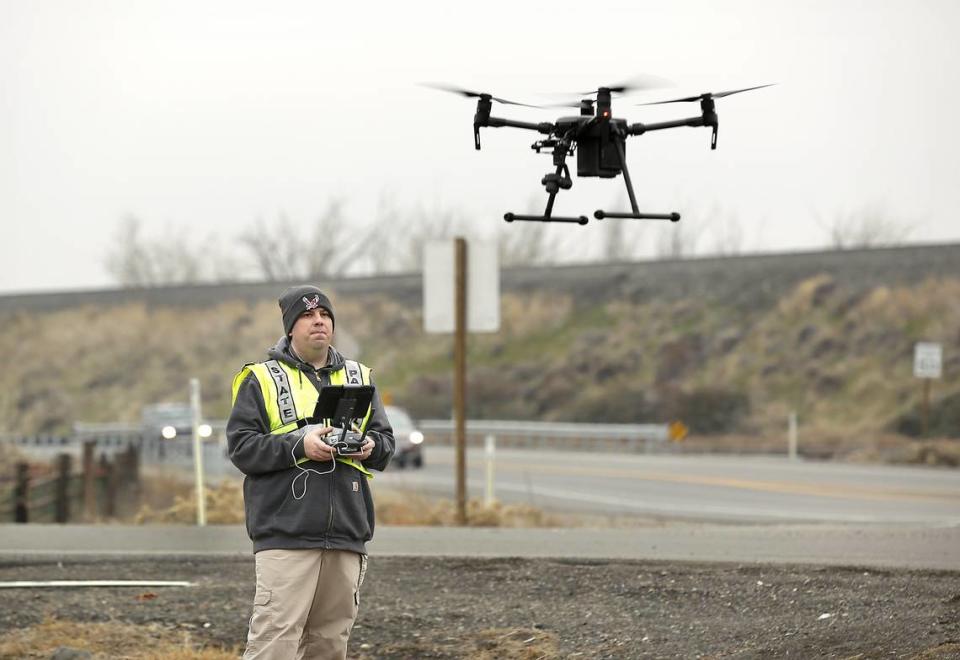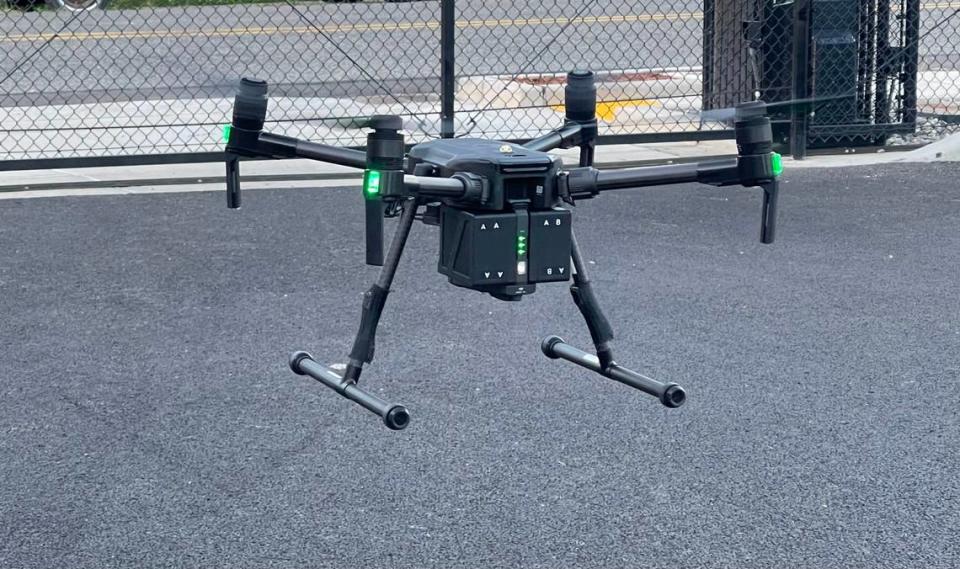WA was one of first, biggest adopters of law enforcement drones. Why is it funding more?
A call has gone out from the state of Washington, asking local law enforcement agencies to apply for vehicle-tracking technology funding.
The money, which was allocated by the state legislature, will primarily go to license plate readers, GPS trackers and unmanned aerial vehicles, or drones. According to a request for proposals from the Washington State Department of Commerce on May 27, the program’s first round of grants funded 15 new UAVs for law enforcement agencies across the state. For this second round of funding, $1.43 million has been set aside for proposals.
A WSDC official said in a statement emailed to McClatchy that this is the first program that she’s aware of to allocate statewide funding specifically for vehicle pursuit technologies like drones.
But Washington already has plenty of law enforcement drones. A 2019 Oregon Public Broadcasting article reported that, at the time, the Washington State Patrol had the biggest drone fleet of any agency in the country. So why is the state proving funding for more?
Do WA police have the most drones?
While Washington was an early adopter of law enforcement UAVs, the fleet hasn’t been significantly expanded since 2019, according to WSP Lieutenant Ryan Durbin. In that time, the fleets of corresponding agencies in some states have surpassed WSP’s drone numbers.
“At that time, Washington State Patrol probably did have one of the largest, at least in the nation. But today, the landscape’s changed pretty considerably,” Durbin told McClatchy News. “So I would say that New York state, for sure Texas, has a much larger fleet than what the state patrol does.”
WSP rolled out a pilot program for UAVs in 2017 that was so successful, according to Durbin, that it became a full-scale operation.
“The pilot project was coming to an end when we had the Amtrak derailment on I-5 in DuPont. That was really the ah-ha moment, where, what would’ve taken weeks to measure and document that scene took less than two hours… So that’s what actually made our pilot project into a full grown program,” Durbin said.
Even though it’s been surpassed by some states’ fleets, Durbin estimates that WSP’s fleet is still one of the biggest in the country.
“We do go to a national conference every year and we are larger than most states.”

Why are WA police getting more UAVs?
Despite being well-equipped overall with drones, distribution of UAVs across state law enforcement agencies in Washington state varies. For example, local law enforcement agencies and WSP have separate fleets. Just because the state patrol has an expansive fleet doesn’t mean that each police department across the state does.
While there is some overlap in how they might use drones, WSP primarily uses them to reduce the time of highway closures during a collision investigation.
“We became an early adopter of the UAV technology because you could fly over a freeway, collect the same evidence in a 3D matter… We found in our pilot project, over an 80% reduction in time that it would take for road closures related to doing that crime scene mapping,” Durbin said.
Local agencies tend to have different uses for drones, according to Durbin.
“There are some agencies that use UAVs for search and rescue, because they can outfit the UAVs with things like thermal cameras. So they’ve located lost children that might’ve wandered away… When they’re sending officers into a residence, it is just one more eye, perspective where they can see if somebody was fleeing out the back of a residence,” Durbin said.
The newly-announced drone funding is for local agencies as a form of vehicle pursuit technology. Of course, that doesn’t mean that’s the only thing they can be used for. But in order to receive funding, a police department must submit a “request for specific vehicle pursuit technology, and detailed budget, which should include training on the use of that technology, and a specific plan for the implementation, use, and effectiveness reporting of that technology,” according to the Department of Commerce’s request for proposals.

WA police drone privacy concerns
While officers say UAVs are an important took for improving public safety, that sentiment isn’t universal. Drones in law enforcement come at a cost to privacy, according to Tee Sannon, technology policy program director at the Washington branch of the American Civil Liberties Union.
“Drones supercharge government surveillance by enabling the government to cheaply and easily see into areas where privacy is expected,” Sannon said in a statement to McClatchy.
In particular, Sannon said they increase government surveillance capabilities.
“Drones can carry multiple surveillance tools like microphones, thermal cameras, and facial recognition systems over both public spaces and private land while gathering information, purposefully or while in transit to an investigation site, that absent strong privacy policies and regulations, can be used or shared with other government agencies,” Sannon said.
However, WSP’s Durbin said that there are measures in place to address those concerns.
“If law enforcement was to utilize that technology or any technology, they would have to first apply and be granted a search warrant to do those operations,” Durbin said. “So nothing, by using a UAV, changes someone’s expectation to privacy and the assurances that their privacy will be maintained.”

